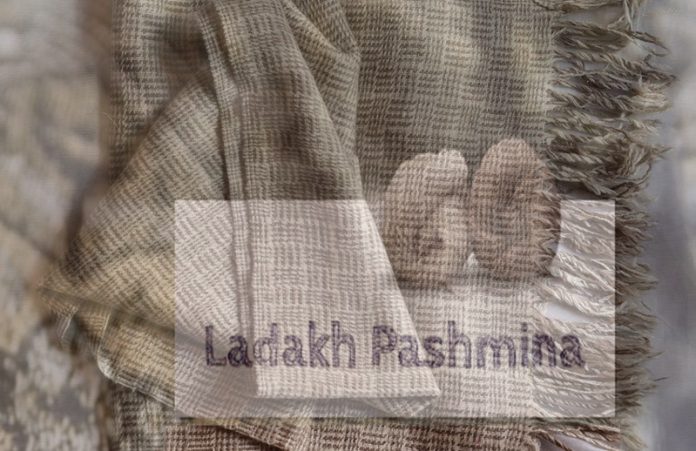The certification of Ladakh’s Pashmina wool with a GI tag is a defining moment in the region’s quest to claim ownership of its unique cultural and economic heritage. This certificate recognises the superior quality of Ladakh’s Pashmina, known colloquially as “Soft Gold,” and serves as a powerful validation of Ladakh’s position as the true home of this world-renowned fibre. Pashmina wool, which has been an intrinsic part of the region’s culture and economy for centuries, is widely regarded for its softness, warmth, and luxury. However, in recent decades, Ladakh’s Pashmina herders have found their livelihood threatened by an influx of counterfeit products and misuse of the Pashmina name by others. The GI certification of Ladakh’s Pashmina is thus not only a shield against these challenges but also a stepping stone to a more prosperous future for the region’s herders, artisans, and entrepreneurs.
The GI tagging of Ladakh’s Pashmina wool is a perfect example of how Ladakh’s identity is being shaped and enhanced. Ladakh now owns genuine products to showcase, such as Pashmina, sea buckthorn, and apricots. Historically, while the Kashmir Valley has been a prominent player in the production and weaving of Pashmina shawls, the raw material-the fine wool-comes primarily from the high-altitude Changthang region of Ladakh. By finally claiming GI recognition for its Pashmina, Ladakh has taken a decisive step towards rectifying this historical oversight and ensuring that the economic benefits of this heritage product are shared more equitably with the people who produce it.
The GI certification is a game changer for Ladakh’s Pashmina herders, Changpa nomads, who rear the famous Changthangi goats from which the wool is sourced. However, despite the premium prices that Pashmina shawls fetch in international markets, many herders remain trapped in a cycle of poverty due to middlemen, lack of recognition, and poor access to broader markets. The potential for increased income for Pashmina herders and Self-Help Groups (SHGs) through targeted interventions aimed at improving wool production. The introduction of stall feeding, artificial insemination, and selective breeding of Pashmina goats could lead to an increase in wool yield, thereby improving the financial condition of herders. Moreover, encouraging women to participate in these activities offers a significant opportunity to uplift rural households, especially given the strong presence of Women SHGs in Ladakh.
Further, the GI tag offers a protective shield against the flood of counterfeit products that have plagued the market. By ensuring that only genuine Pashmina from Ladakh is sold under its name, the certification will boost consumer confidence and enable artisans and entrepreneurs to fetch fair prices for their work. This move will also position Ladakh’s Pashmina as a high-value brand, attracting discerning customers from across the globe who are willing to pay a premium for authenticity and quality.
However, the challenge now is to ensure that the benefits of this recognition reach the grassroots level and contribute to the long-term sustainability of the Pashmina industry in Ladakh. This will require a multifaceted approach. One of the key issues is the high mortality rate of Pashmina goat, which has been a major hurdle in maintaining and increasing goat populations. The administration’s efforts, including the distribution of Pashmina kid pens and the establishment of a Pashmina dehairing plant in Leh, are commendable steps in this direction. However, more needs to be done to improve animal husbandry practices, provide adequate fodder during the harsh winter months, and ensure that herders have access to veterinary care and support. Another challenge is the need to attract Ladakh’s youth to traditional occupations like Pashmina herding. As modernisation sweeps through the region, many young people are turning away from this labour-intensive livelihood in search of easier, more lucrative opportunities in urban centres. With the right strategies in place, Ladakh’s “Soft Gold” could very well become the shining star of its economy, bringing prosperity to herders, artisans, and the region as a whole.
Trending Now
E-Paper


